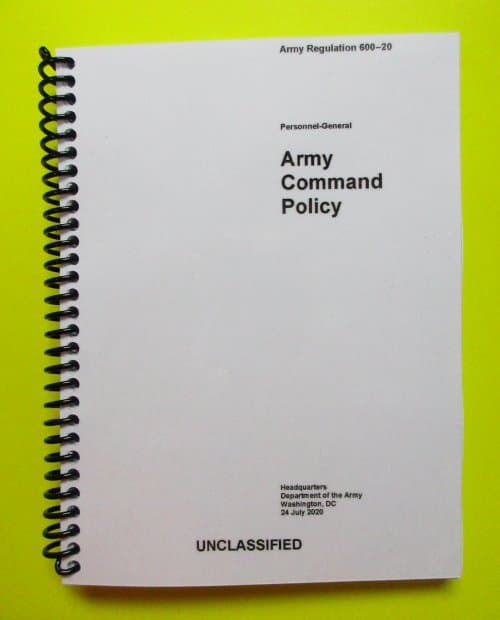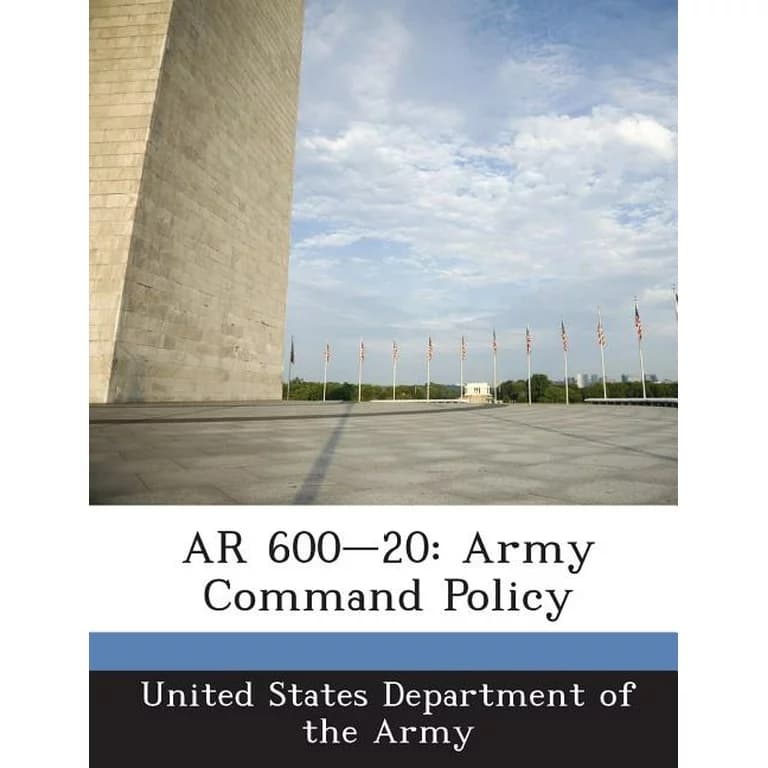Army Regulation AR 600-20, Army Command Policy, is a 136-page document describing commanders’ policies and responsibilities. It covers everything from the Army Ready and Resilient Campaign Plan to military discipline and conduct. One of the most important aspects of being a commander is ensuring that your Soldiers are cared for and that their families are supported. This is part of the commander’s responsibility and can make or break morale in your unit.
What is AR 600-20?
The Army Regulation AR 600-20 Army Command Policy is a 136-page document that prescribes the policies and responsibilities of Army commanders. It covers the well being of the force, military discipline and conduct, the Army Equal Opportunity Program, and the Army Sexual Assault Victim Program. It is important for commanders to have a clear understanding of this policy so that they can perform their duties effectively.
The AR 600-20 Army Command Policy also includes specific guidelines for hazing and bullying. Hazing is defined as any behavior by a service member or DA civilian employee with a military nexus that unnecessarily causes another person to suffer or be exposed to an activity that is cruel, abusive, oppressive, or harmful. The mens rea required for this offense is recklessness, which means that the accused must have disregarded a known risk that his or her behavior would result in another person suffering.
The AR 600-20 Army Command Policy also outlines specific requirements for reprimands and other administrative actions. For example, a commander must make sure that all members of his or her unit receive timely performance counseling. It is also a commander’s responsibility to report any online misconduct that occurs in the unit. This includes comments, posts, and links that violate the UCMJ or basic rules of Soldier conduct. It is also against Army policy to talk negatively about supervisors or release sensitive information.

What Does AR 600-20 Cover?
Army Regulation 600-20 covers all of the Army’s policies and responsibilities for commanders at every level. This 136-page document is jam-packed with important information that all commanders should read and understand. It covers topics from the well-being of the force to military discipline and equal opportunity. It also addresses the chain of command and other matters that are crucial to the success of a unit’s deployment.
For example, the regulation covers Army sexual harassment policy and procedures. It defines harassment as any unwelcome action that causes emotional or psychological distress. It also includes actions that are intimidating or hostile. Additionally, it covers sexual assault and other forms of violence. Moreover, it encourages commanders to address concerns that are reported by Soldiers and civilians.
Another important issue covered by the regulation is hazing and bullying. It requires commanders to take measures to prevent these activities from occurring within their units. It also requires commanders to report any instances of hazing or bullying to the chain of command.
In addition, the regulation prohibits certain relationships between officers and enlisted personnel. These include dating, shared living accommodations other than those directed by operational requirements, and intimate or sexual relationships. However, it does not prohibit marriage. This prohibition is based on the assumption that inappropriate or unprofessional relationships can cause unfairness, exploitive and coercive relationships, and may compromise the integrity of supervisory authority and chain of command.
